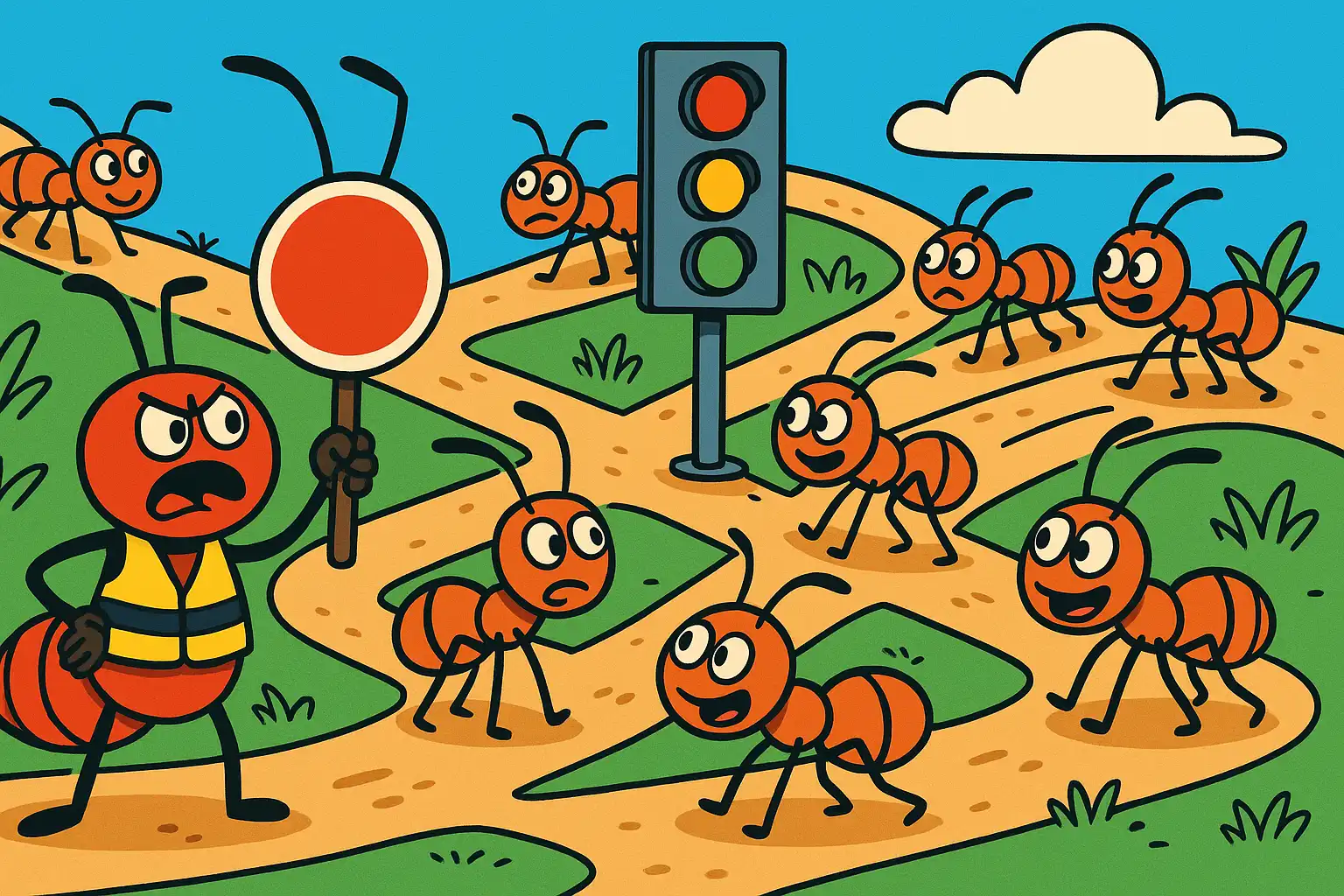Ants are fascinating creatures, showcasing a level of organization that many human systems aspire to achieve. Despite their tiny size, they can exhibit extraordinary teamwork and efficiency, especially when it comes to navigating their surroundings. The way ants manage traffic within their colonies is a complex interplay of communication, pheromone trails, and behavioral patterns.
The Role of Pheromones
One of the primary ways ants organize their movement is through pheromones, chemical signals they release to communicate with one another. When an ant discovers food or a new nesting site, it will leave a pheromone trail back to the colony. Other ants detect this trail and follow it, reinforcing the path by adding their pheromones.
This method not only directs traffic towards a resource but also ensures that it can become a well-established route for future foraging activities. Over time, the most efficient trails will be used more frequently, optimizing the movement of large numbers of ants.
Traffic Patterns and Flow
Ants exhibit fascinating traffic patterns similar to those seen in human cities. When traffic increases, ants can adapt their routes to prevent congestion. Research shows that ants can switch paths dynamically based on the volume of traffic. When a route becomes crowded, ants may choose alternative paths, which helps maintain a smooth flow of movement.
These patterns can be broken down into several key characteristics:
- Decentralized Decision-Making: No single ant dictates traffic flow; decisions are made collectively based on pheromone levels.
- Adaptive Routes: Ants can identify and shift to less crowded paths quickly.
- Congestion Management: Ants demonstrate the ability to slow down or speed up based on traffic conditions.
Challenges in Traffic Management
Despite their remarkable abilities, ants face challenges when managing traffic. For instance, obstacles in their environment can disrupt established pheromone trails. When this happens, ants must quickly adapt by finding new routes or working together to clear the obstruction. Their collective behavior allows them to overcome these challenges through collaboration, utilizing the strength of their numbers.
| Traffic Condition | Response | Result |
|---|---|---|
| Low Traffic | All ants use the same route | Efficient foraging |
| Medium Traffic | Ants start to avoid congested paths | Increased use of alternative routes |
| High Traffic | Ants slow down and redistribute | Maintained flow and reduced collisions |
Conclusion
Ants are a testament to the power of collective intelligence and organization. Their ability to manage traffic efficiently not only ensures the survival of their colonies but also provides valuable insights into how we might improve our own systems of movement and organization. By studying these tiny architects of nature, we can learn more about optimization, cooperation, and the art of navigating complexity.

